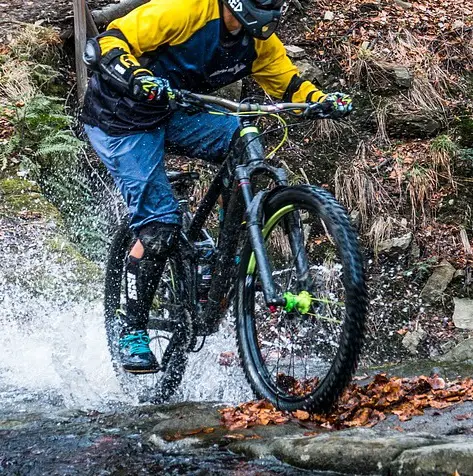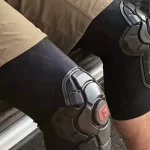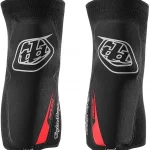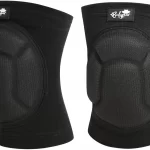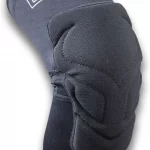Bombing down rough trails at speed means inevitable tumbles eventually. And despite helmet protection, crashes bruise and scrape exposed knees severely most the time. So are dedicated MTB knee pads truly effective shielding impacts during crashes? Let’s weigh factors influencing their usefulness.
Reducing Impact Forces
Colliding with unyielding surfaces transmits tremendous forces through kneecaps directly into joint structures. At only 4-5mm thick, knee skin proves no match cushioning such energy before bones and ligaments get pummeled internally.
But quality MTB knee pads integrate flexible synthetic rubbers and shock absorbing foams up to 2cm thick or greater. By lengthening crash energy displacement over bigger distances, pads dissipate trauma before reaching the actual knee infinitely better. Targeted protection placed strategically handles the worst punishment.
Sliding Further With Less Pain
Crashes on rugged terrain like shale and gravel shred unprotected knees mercilessly skinning directly to the bone. Painful scabs compromise riding for weeks after. But armored knee pads incorporate rugged outer fabrics withstanding tremendous abrasion and sliding forces without penetrating internally.
High friction Kevlar, ballistic nylons, and puncture resistant compounds withstand far more abrasion than jeans or regular clothing while sliding. By deflecting rather than absorbing crash energy through fabrics engineered to shed intense impacts safely, quality knee pads protect against slashes amazingly well.
Stabilizing Impact Zones
Unlike passive pads simply cushioning blows, many mountain bike models integrate comprehensive fit and stabilization features too. This ensures pads stay centered protecting knees without spinning or shifting upon crashes. Secure coverage exactly where needed matters most.
Snug neoprene sleeves, adjustable straps, grippy rubber backing, articulated designs, and flexible chassis align pads optimally. Conforming without migration or instability focuses shielding effects right over kneecaps as impacts occur. Stable pads withstand crashes better and encourage using protection consistently.
Building Riding Confidence
While beginners appreciate protection from inevitable crashes and awkward landings early on, experienced riders gain advantages wearing pads frequently too. Knowing your knees withstand bailing mistakes gives confidence attempting harder tricks and technical lines as riding progresses.
You can tackle higher drops, tighter gaps, savage rock gardens, and slippery bridges since biffing carries less painful consequences now. Building skills beyond current levels safely requires pushing limits with some crashes assured. So knee pads enable skill progressions confidently. Don’t limit your potential needlessly!
Matching Riding Intensity
Not all mountain biking adventures require maximum impact defenses however. Lightweight XC knee pads suit long distance cross country rides nicely without overheating or movement issues pedaling for hours. Minimalist sleeves stay put despite sweat buildup across marathon distances.
But hardcore downhill and bike park laps punish gear mercilessly barreling over obstacles nonstop. Only heavy-duty pads withstand such violent abuse reliably. So tailor knee pad protections toward average ride intensity and crash potentials appropriately. Too much bulk hampers pedaling for some disciplines.
Cooling Design Features
Vigorous mountain bike riding already overheats bodies quickly working hard charging trails. But knee pads also insulate legs further adding sweltering annoyance trying to pedal powerfully. Evaluating venting and cooling options keeps riding tolerable wearing pads.
Perforations, mesh vent panels, thin sleeves, and sweat-wicking fabric constructions promote airflow circulation crucial managing exertion buildup. Or consider open back hybrid pads offering heavy impact shields across front zones while backing stays entirely vented for temperature moderation while pedaling.
Easy On & Off Options
Racers and short distance riders might tolerate slow pad removal/installs between timed downhill and transfer sections during competitions. But casual riders grinding long hours need pads slipping on and off effortlessly for nature breaks etc without struggling awkwardly trailside constantly.
Simplified secure closures like magnets and single locking bands allow quick donning and removal repeatedly as needed during bigger ride days. Pads left dangling loosely around knees between sessions also risks losing or damaging pieces while pedaling around. So well designed quick locks retain pads perfectly without constant fussing.
Additional Safety Features
Beyond just cushioning knee structure itself, quality pads integrate useful extras elevating protection levels further:
Reflective Trim: Highlights rider location to motorists in low light conditions. Prevents painful collisions.
Silicone Grippers: Stops pads slowly migrating during extended pedaling motions. Maintains optimal protection positioning.
Anti-Slip Guards: Reduces joint twists falling laterally overloading structures beyond impacts.
Removable Liners: Let pads handle repeated crash staining without washing entire garments. Keeps them fresher longer term.
Fun Colors and Prints: Adds style showing off personality bombing trails with friends. Building MTB culture starts with shoulders down!
Are Knee Pads Truly Necessary?
Some old school mountain bikers consider knee pads unnecessary safety crutches interfering with core riding enjoyment and connection with trails. But riding styles and bike capabilities have progressed exponentially more aggressive than vintage equipment allowed for.
Modern trails serve up relentless rock gardens, sheer vertical drops, rickety elevated stunts, and mach speed velocities unlike anything pioneering generations endured. So adopting appropriate protections against current gear and conditions just makes smart sense extending seasons.
Besides, no amount of skill prevents unpredictable crashes entirely. Tree roots, loose gravel, mechanical failures and other random factors guarantee spills eventually no matter what. Accept knee pads as responsible insurance better protecting joint integrity when the inevitable goes down. Don’t quit seasons early limping around needlessly!
Take Responsibility Out There
New mountain bike riders delay getting pads falsely justifying cost or appearance factors initially. But your first crash teaches quickly that knees represent terrible impact zones defenseless against hard terrain and components. Don’t learn lessons through lasting limps and scars!
Experienced riders maximize skills progressing into trickier situations better guarded too. Unless racing elite-level XC, most riders appreciate having padding when pushing limits. So take responsibility for health and keep exploring trails safely now with capable knee pads along for the ride!
